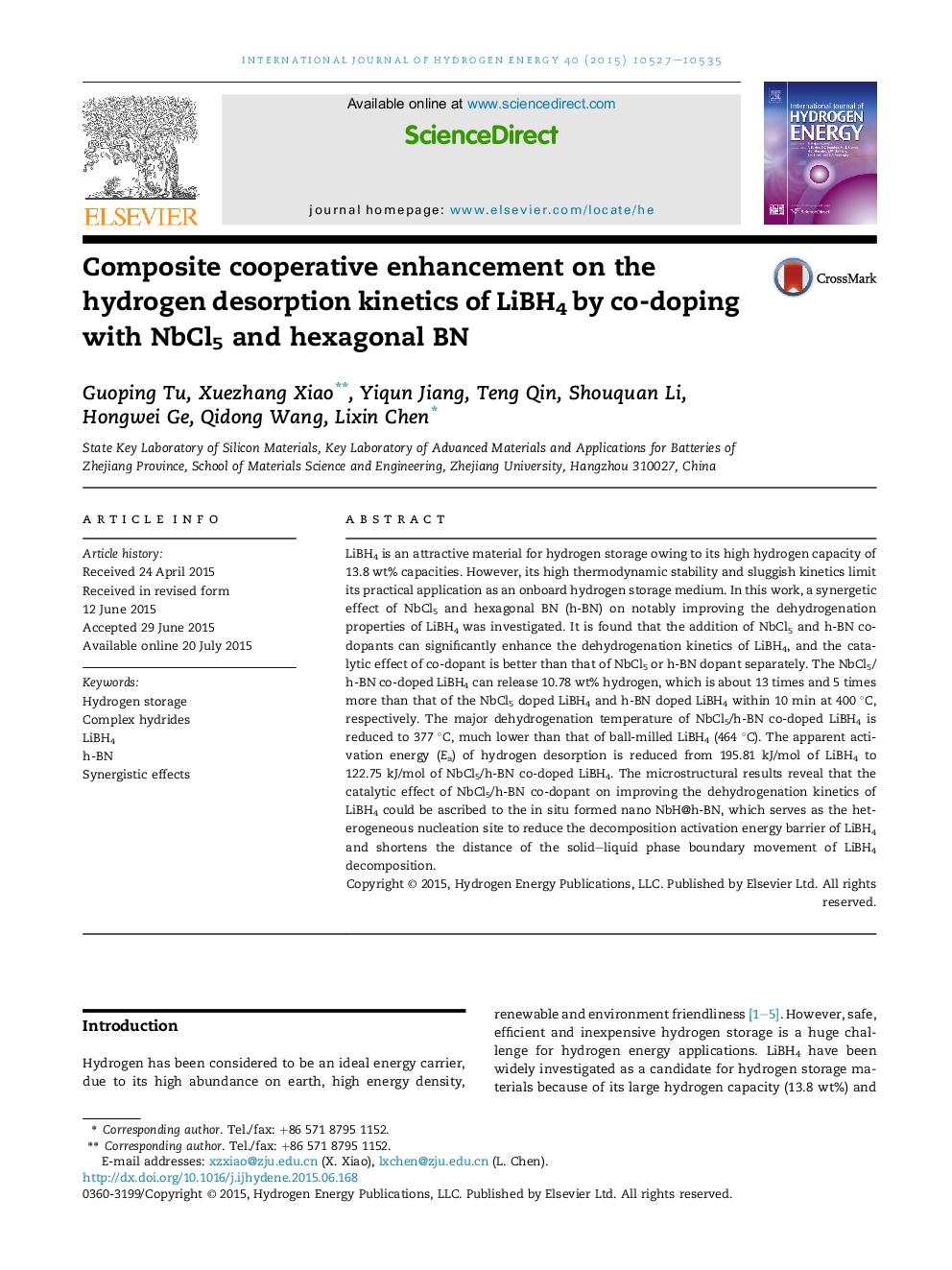| Article ID | Journal | Published Year | Pages | File Type |
|---|---|---|---|---|
| 1279104 | International Journal of Hydrogen Energy | 2015 | 9 Pages |
•Novel synergistic effects of NbCl5 and h-BN on improving the dehydrogenation kinetics properties of LiBH4.•Dehydrogenation of NbCl5/h-BN co-doped LiBH4 is two-dimensional diffusion controlled kinetics mechanism.•The in situ formed nano-NbH@BN probably acts as the active species during the dehydrogenation.
LiBH4 is an attractive material for hydrogen storage owing to its high hydrogen capacity of 13.8 wt% capacities. However, its high thermodynamic stability and sluggish kinetics limit its practical application as an onboard hydrogen storage medium. In this work, a synergetic effect of NbCl5 and hexagonal BN (h-BN) on notably improving the dehydrogenation properties of LiBH4 was investigated. It is found that the addition of NbCl5 and h-BN co-dopants can significantly enhance the dehydrogenation kinetics of LiBH4, and the catalytic effect of co-dopant is better than that of NbCl5 or h-BN dopant separately. The NbCl5/h-BN co-doped LiBH4 can release 10.78 wt% hydrogen, which is about 13 times and 5 times more than that of the NbCl5 doped LiBH4 and h-BN doped LiBH4 within 10 min at 400 °C, respectively. The major dehydrogenation temperature of NbCl5/h-BN co-doped LiBH4 is reduced to 377 °C, much lower than that of ball-milled LiBH4 (464 °C). The apparent activation energy (Ea) of hydrogen desorption is reduced from 195.81 kJ/mol of LiBH4 to 122.75 kJ/mol of NbCl5/h-BN co-doped LiBH4. The microstructural results reveal that the catalytic effect of NbCl5/h-BN co-dopant on improving the dehydrogenation kinetics of LiBH4 could be ascribed to the in situ formed nano NbH@h-BN, which serves as the heterogeneous nucleation site to reduce the decomposition activation energy barrier of LiBH4 and shortens the distance of the solid–liquid phase boundary movement of LiBH4 decomposition.
